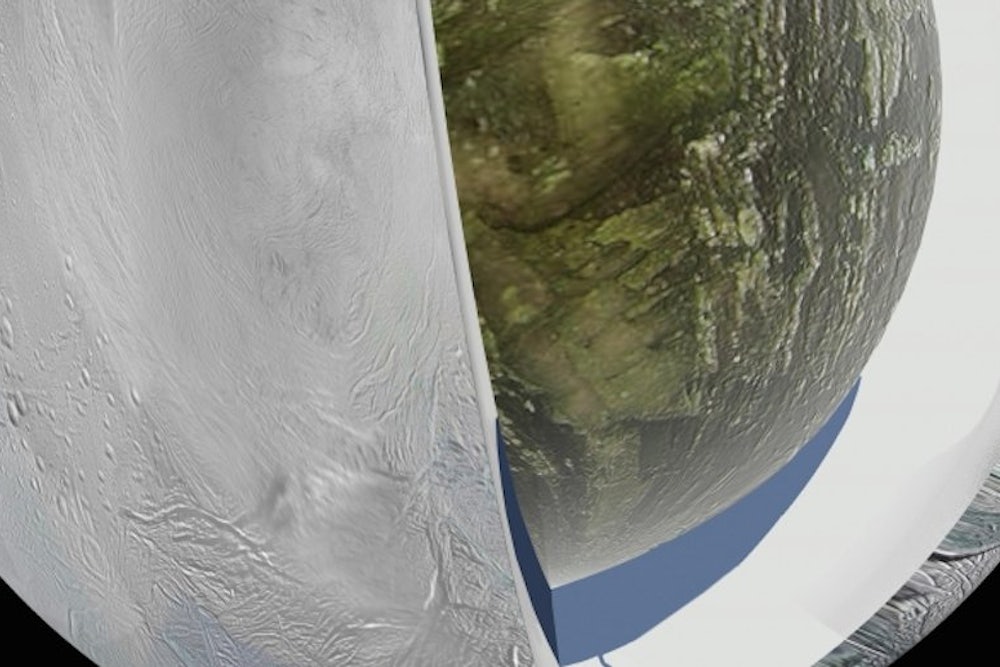Astronomers have discovered evidence for a large liquid water ocean beneath the surface of Enceladus, Saturn's unusual, ice-clad moon that's only one-seventh as large as our Moon. This makes it perhaps an even better candidate for extraterrestrial life than Jupiter's moon Europa, the other possible candidate in the Solar System.
Observations made by the Cassini probe on a fly-by in 2005 revealed that Enceladus was regularly emitting streams of ice and water from geysers on its surface, which in turn appeared to replenish Saturn's E-ring. The implication was that there must have been some reasonably-sized source for that water, and now further measurements from several more Cassini fly-bys have confirmed that there is a huge body of water centered beneath the moon's southern pole.
"The Cassini gravity measurements show a negative gravity anomaly at the south pole that however is not as large as expected from the deep depression detected by the onboard camera," said Luciano Iess of Sapienza University of Rome, the lead author of the paper, published in Science. "Hence the conclusion that there must be a denser material at depth that compensates the missing mass: very likely liquid water, which is seven percent denser than ice. The magnitude of the anomaly gave us the size of the water reservoir."
The way astronomers use gravity to detect what's beneath Enceladus' surface is quite clever. As it flies past any object its path will be perturbed by gravity, and gravity is, of course, determined by the mass of the object, and radio receivers back on Earth can detect the subtle Doppler effect on the speed of its signals. Take several of those measurements as it flies over different parts of the moon and you get different measurements of mass distribution throughout its structure, giving an idea of what kinds of materials are hidden below. In this case, it turned out that beneath the 30 to 40km-thick ice cap covering the moon there's a further 10km of water before reaching the rocky core. The total amount of water is unclear because Cassini only took measurements to the south of Enceladus' equator, so the ocean may be even larger than just the one hemisphere.
Enceladus is now considered a more viable candidate for a mission designed to search for extraterrestrial life—compared to Europa—because, unlike Europa, we know Enceladus' water has organic materials in it. Cassini performed a fly-by through one of its geysers in 2011, confirming that the water contained carbon, nitrogen and organic compounds necessary for building amino acids. Since any microbial life is likely to be blasted out into space in one of these jets, it significantly simplifies any mission designed to look for it, as it just needs to orbit Enceladus with the right equipment to catch samples as they're fired out, though any serious mission to find life there would most likely also include some kind of drilling probe to get through the crust.
This piece originally appeared on newstatesman.com.
